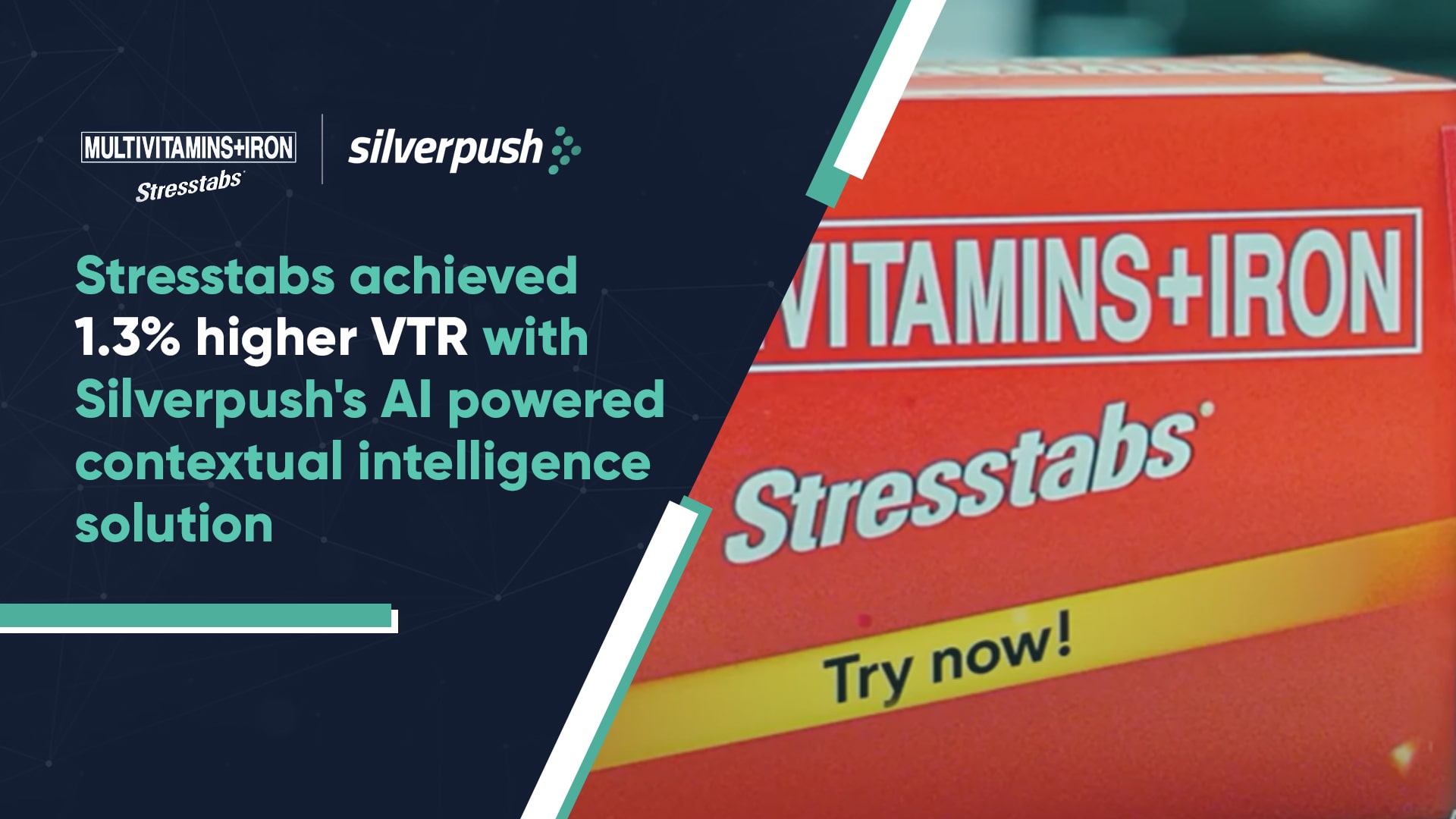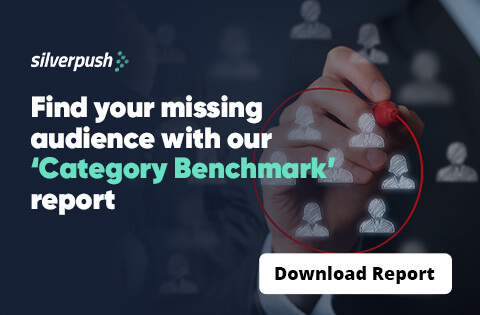Don’t Let Keyword Overblocking Kill Your Reach: Here’s What to Do
PUBLISH DATE: 11 August 2023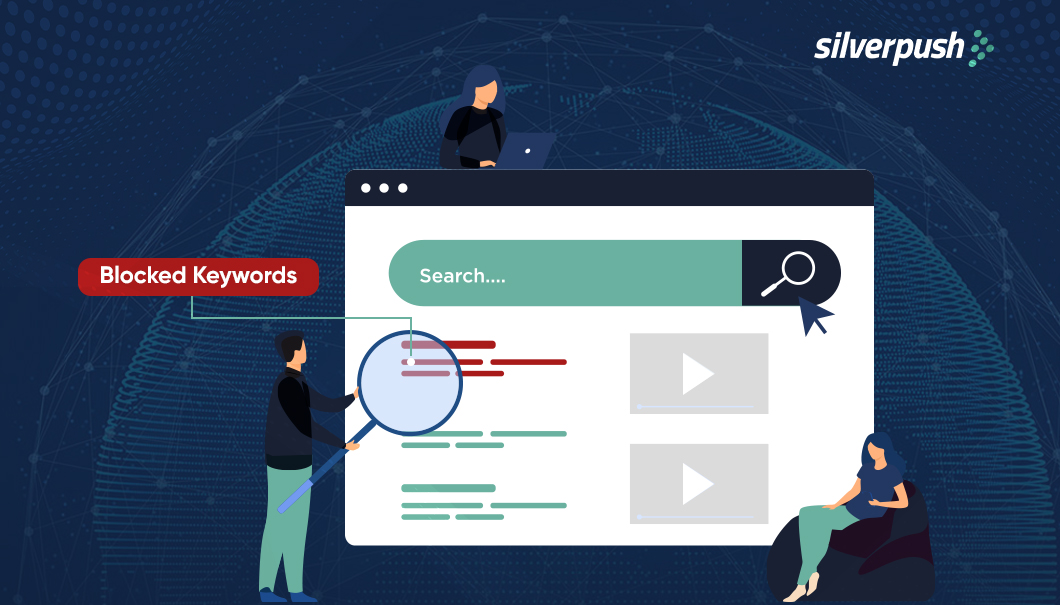
For advertisers, protecting their brand from inappropriate content is of utmost priority. When advertisements appear alongside harmful content, it has the potential to significantly damage the brand’s reputation. According to data, 54% of consumers hold a negative perception of brands that associate themselves with morally conflicting content.
This, in turn, can have a substantial impact on their advertising revenue, leading to decreased click-through rates (CTRs) for ad campaigns.
But, protecting your brand image does not equal being too restrictive with keywords or blocking keywords excessively as this can negatively impact your reach and represent a hugely wasted opportunity for both sides of the advertising ecosystem.
If your brand struggles to reach more people due to blocking too many keywords in the past, this blog is here to help. Keep reading to learn how you can avoid overblocking keywords and improve your reach.
How Keyword Overblocking is Killing Reach and Monetization Opportunities
Many advertisers employ brand safety measures to ensure their ads are not displayed alongside inappropriate content. A common example is a children’s brand ensuring their ads don’t appear next to adult-oriented material.
Another layer of protection often used by advertisers and agencies is keyword blocking. This allows them to prevent ads from being shown alongside content containing specific words. For instance, a family-friendly brand might block the keyword “porn.”
However, excessive keyword blocking can lead to a problem called overblocking. This can diminish the reach of your online ads and cause your ads to miss out on relevant searches.
Several reasons highlight why overblocking can harm your ad campaign’s effectiveness:
1. Missed Relevant Searches: Overblocking can prevent your ads from showing up for searches closely related to your target keywords. For example, if you block “free shipping,” your ads might not appear for searches like “buy shoes with free shipping.”
2. Reduced Relevance: Overblocked ads may appear for irrelevant searches, making them less appealing to the audience. This can lead to fewer clicks.
Finding the right approach to keyword blocklists doesn’t have a one-size-fits-all solution. While some keywords (e.g., “terrorist”) are clearly necessary to block, an excessive list can overly restrict your digital advertising. This can lead to less effective spending and disappointing results.
Here’s How to Make Your Advertising More Inclusive
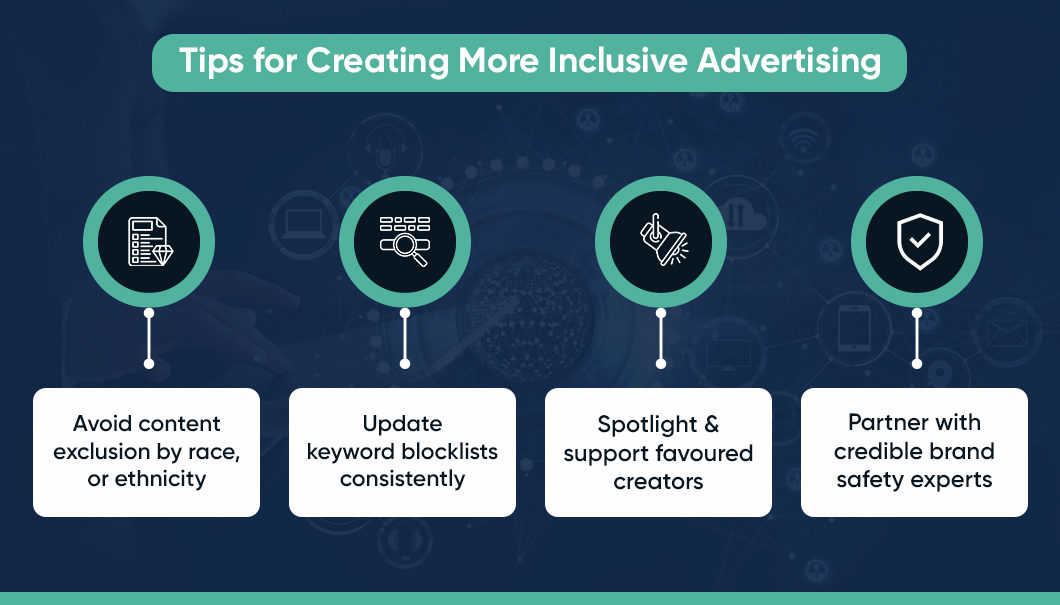
Of course, it’s important to focus our attention on brand safety. But as an industry, we need to think of new ways to implement brand safety without excluding creators based on their sexual orientation, race, or ethnicity.
The keyword blocklists that were relevant in the past might not be as effective today. Even though they needn’t be removed completely, you must regularly update them to avoid mistakenly classifying suitable content as harmful.
Ensure inclusion by amplifying preferred creators’ voices and carefully monitoring brand safety partnerships.
This final point is one we don’t see considered often enough. Working with a third-party brand safety and brand suitability partner can help with your brand safety measures.
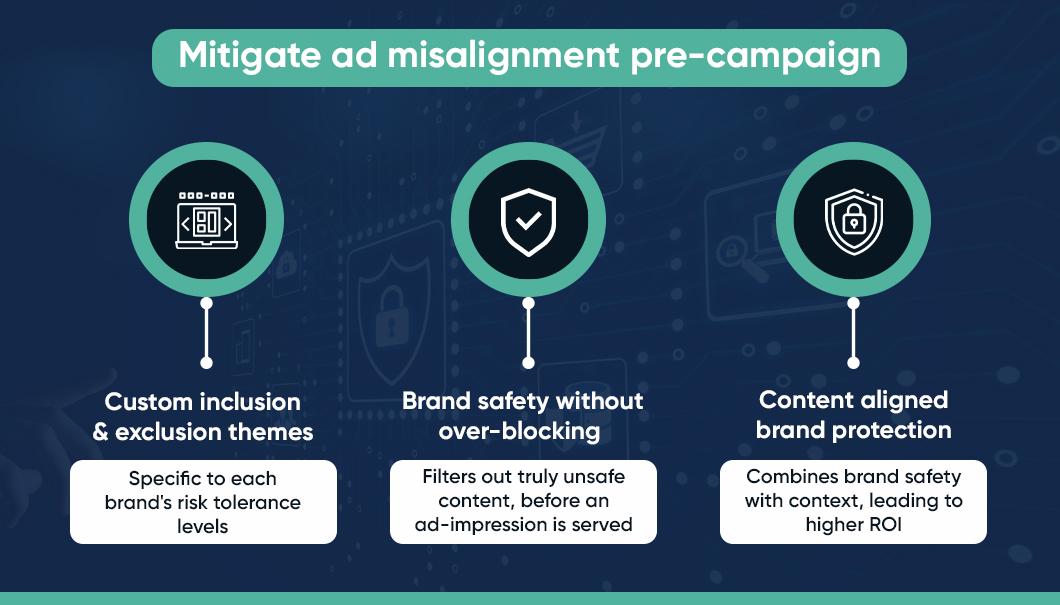
Leverage the power of Silverpush, a leader in AI-driven contextual targeting, and its cutting-edge solution, Mirrors.
It offers custom targeting and exclusion themes to accurately identify unsafe content across a comprehensive set of brand safety categories. It ensures that only the unsafe video or page is blocked and not the entire channel or website to
Avoid over-blocking or killing reach.
This is done across multiple platforms, such as YouTube, Openweb, and Meta, using natural language processing (NLP) and semantic analysis.
Moreover, Mirrors’ Multicultural targeting approach ensures avoiding stereotypical assumptions and targets diverse audiences through inclusive and personalized ads that respect individual preferences.
It does not end here, Mirrors offers a multitude of capabilities, to know how Mirrors can effectively solve the overblocking problem and ensure your reach is uncompromised, fill out the form on your right and an expert from our team will contact you soon.
Last Words
In the advertising industry, it’s essential to embrace changes to brand safety measures to ensure that we are not excluding words, phrases or languages that could exclude minority groups. It’s time to move forward with your approaches to brand safety. When we do, we’ll be creating an online world that promotes positivity and inclusivity.
The Demise of Third-Party Cookies: Can AI Advertising Fill the Void?
PUBLISH DATE: 15 March 2023
As third-party cookies crumble, AI advertising is gearing up for its time in the spotlight – get ready for the rise of the machines in the ad tech industry!
The importance of third-party cookies can be well understood by digital marketers who rely on these small pieces of information to serve personalized ads to their audiences.
The usage of user data without their consent or knowledge has sparked significant debates surrounding consumer privacy, with users, legislators, and companies all expressing concerns about the potential impact on individual confidentiality.
Although cookies have been valuable for advertisers and marketers, their usage is now being closely examined as users demand more control over their online data, and companies face increasing pressure to prioritize consumer privacy. Major web browsers like Mozilla Firefox and Safari have already banned third-party cookies, and Google Chrome will soon follow suit.
To navigate the post-cookie world, advertisers will need to explore alternative options like Artificial Intelligence (AI), which is likely to replace cookies. AI-powered contextual advertising has emerged as a powerful tool for innovation, with companies using it for management, robotics, and marketing.
What Challenges are Faced by Marketers Due to Third-Party Cookies?
Ad tech companies often use a technique called fingerprinting to track users and deliver personalized ads. Fingerprinting relies on third-party cookies to generate user-specific browser ID tags.
When a user accesses a website with a cookie-based ad, a tracking pixel embedded in the ad collects the user’s browser tag and sends it to the advertiser’s server. Ad tech companies then use this information to develop user profiles and track browsing history, purchases, and other personal information.
However, users often have little knowledge of what personal information is collected and have limited control over preventing unwanted data collection unless they manually disable cookies on their browsers.
Eliminating the Use of 3rd Party Cookies
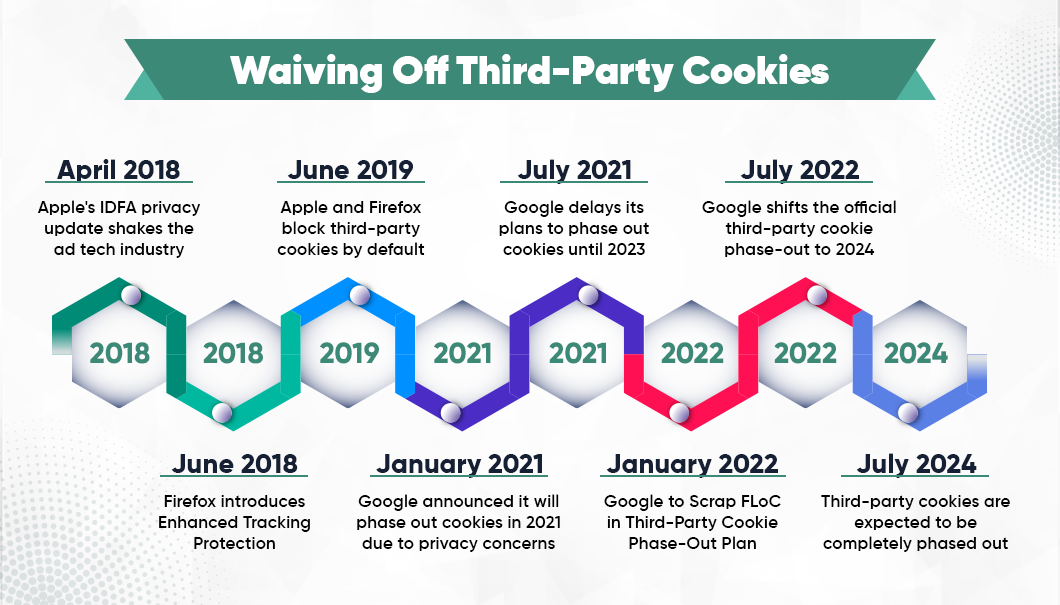
As privacy concerns grow, more companies are opting out of using third-party cookies. Major web browsers like Safari and Firefox have already blocked cross-tracking third-party cookies, and Google plans to phase them out on Chrome by 2024 to address user demands for greater privacy, transparency, choice, and control over their data.
Advertisers, who rely heavily on third-party cookies for data collection, will be significantly impacted by this change and must find new ways to access similar sets of data.
The most comprehensive data regulation to date is the General Data Protection Regulation (GDPR), which came into effect in 2018 within the European Union. It has set a high bar for data protection standards globally, as it emphasizes the importance of user consent and data transparency, putting greater control over personal data in the hands of users.
The Future of AI Advertising: Moving Beyond Third-Party Cookies
With the phasing out of third-party tracking cookies, advertising agencies are turning to contextual advertising as a strategy for targeting users based on their online experience categories, rather than behavioral advertising. Contextual targeting is being seen as a brand-safe, future-proof, and successful cookieless targeting option.
According to market data, the global contextual advertising market is predicted to reach $376.2 Billion by 2027, indicating the increasing popularity of this strategy.
Companies worldwide are redirecting their marketing resources toward developing a strong contextual strategy to adapt to the changing landscape of digital advertising.
Statistics that highlight the importance of contextual advertising:
1. Context is so powerful that 49% of brand marketers are looking to contextual advertising to replace cookies.
2. 79% of consumers are more comfortable seeing Contextual than behavioral ads.
3. Between 2020 and 2027, contextual advertising spending is expected to grow 13.3 percent annually.
4. 49% of US marketers surveyed are using contextual marketing today.
5. In the UK, 32% of marketers use contextual marketing, while 36% use demographic targeting.
Silverpush Leads the Way in AI-Powered Contextual Advertising for a Cookieless Future
As the digital advertising industry transitions to a cookieless future, contextual targeting is emerging as a powerful solution for advertisers looking to engage with their target audience.
Silverpush, one of the leading ad tech companies in the world recognized the limitations of third-party cookies years ago and developed their AI-Powered solution, Mirrors, which has been providing contextual advertising solutions on platforms like YouTube, OpenWeb, Meta, and CTV since 2012.
Mirrors use privacy-safe and contextual targeting solutions to deliver personalized ads to the target audience without relying on their data.
What Makes Mirrors Unique?

Mirrors’ AI-powered technology identifies key contexts and other factors for more precise targeting. Its unique custom identifying capabilities ensure that reach is not duplicated, and a unified approach is used for content-aligned ad placement, brand safety, and custom brand suitability.
The ads are placed in a brand-safe environment and are relevant to the brand, ensuring a positive and effective advertising experience for both the advertiser and the audience.
If you’re interested in learning more about how Silverpush can help you prepare for the cookieless future and advertise successfully, fill out the available form on the right and our team will reach out to you.


